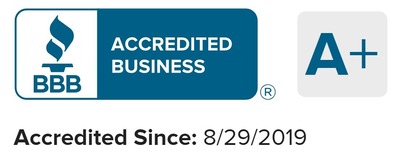Have you ever watched prime rental properties sit vacant while your competitor’s units get snatched up within days? I’ve been managing properties in Oklahoma City for over two decades, and I’ve seen this happen time and time again. The real difference between landlords who thrive and those who struggle isn’t luck; its preparation during peak rental season.
Peak rental season, typically spanning late spring through early summer, represents the most lucrative window for landlords to fill vacancies, maximize rental income, and secure quality tenants. During this period, rental demand surges as families aim to move between school years, college students seek off-campus housing, and professionals relocate for new jobs. If you miss this window, you could face months of vacancy during the slower fall and winter seasons.
But remember that simply having a property available isn’t enough anymore. Today’s rental market is highly competitive, and tenants have more choices, so you must prepare early. In this article, I will walk you through exactly how to prepare your properties, optimize your marketing, streamline your processes, and position yourself to dominate your local rental market when competition is at its fiercest.
When Is Peak Rental Season and Why Does It Matter for Landlords?
Peak rental season runs from May and August, with crazy demand hitting its peak during the summer months, specifically June and July, representing the absolute hottest months for rental activity. According to industry reports, nearly 70% of all relocations occur between Memorial Day and Labor Day. This timing isn’t coincidental. Families want to move when kids are out of school, college students are hunting for apartments before fall semester, and professionals who’ve accepted new jobs need housing before their start dates.
According to Zillow’s 2025 rental data, June marks the busiest week for renters searching and applying, with record numbers of rental applications and property views reflecting heightened demand. But here’s why it truly matters: rental seasonality directly influences prices along with demand. Rents hit their peak in June and July, and renters who move during peak season face 20% to 30% more competition compared to winter months because tenants have fewer alternatives and urgent timelines
Conversely, off-peak rental seasons, typically from October through April, see reduced activity. Factors such as colder weather conditions, ongoing school sessions, and fewer job relocations contribute to this slowdown. However, this period can present opportunities for landlords to attract tenants seeking vacation rentals or those looking for off-season deals.
How Can Landlords Prepare for Peak Rental Season?
After years of managing properties through multiple peak seasons, I’ve learned that the landlords who crush it aren’t necessarily the ones with the fanciest properties; they’re the ones who start preparing while everyone else is still hitting the snooze. Success during the peak season for renting is about strategic preparation, and I’m going to walk you through exactly what works based on real experience, not theory.
1. Start Early Before the Rental Season Picks Up
Begin planning at least 60 to 90 days in advance to align with peak renter activity. If your current tenant’s lease ends in June, you should be planning property improvements in March, finalizing pricing strategies in April, and launching marketing campaigns by early May. This timeline allows you to capture early-bird renters who plan ahead; often your most organized and financially stable prospects.
2. Evaluate the Current Condition of Your Properties
Before peak season hits, conduct comprehensive property inspections to identify issues that could deter potential tenants. Landlords are legally obligated to ensure their tenants have safe and livable places by keeping up with repairs and maintenance. Walk through each unit systematically and document everything with photos. Use a rental inspection checklist to ensure nothing gets overlooked.
- Inspect the Interior and Exterior: Check for any wear and tear, and focus on high-traffic areas like kitchens, bathrooms, and living rooms. Pay attention to curb appeal; a fresh coat of paint or landscaping improvements can make a huge difference.
- Upgrade Appliances and Fixtures: If your property features outdated appliances or fixtures, consider upgrading them. Energy-efficient appliances are not only a selling point but can also reduce utility costs for both you and your tenants.
- Handle Repairs: Fix any issues such as leaky faucets, broken windows, or damaged flooring. Tenants are more likely to rent a property in top condition, and proactive maintenance prevents small problems from turning into costly repairs later on.
3. Fine-Tune Your Rental Pricing
Pricing your rental property correctly is crucial, especially during peak season when tenants are willing to pay more for desirable homes.
- Analyze Comparable Listings: Review similar properties in your area to see what they’re charging. This helps ensure your rental rates are aligned with market expectations.
- Consider Rent Increases: If you’ve made improvements or demand is particularly high, consider raising rent. However, be cautious not to overprice, as this could drive potential renters away.
- Offer Competitive Incentives: While peak season attracts many renters, offering free utilities for the first month, discounted move-in fees, or flexible lease terms can set your property apart.
4. Boost Your Marketing Strategy
Your listing competes with hundreds of others, and tenants make snap judgments in seconds.
List on Multiple Platforms: Post your property on popular rental websites like Zillow, Apartments.com, and local listing sites like OKC Home Realty Services in Oklahoma. The more exposure your rental gets, the more inquiries you’ll receive.
- Highlight Key Features: When writing your listing description, emphasize what makes your property unique; whether it’s pet-friendly, has updated appliances, or is located near public transportation.
- Invest in Professional Photography: High-quality photos are a must. Properties with professional images are more likely to attract attention online, leading to more inquiries.
- Consider Virtual Tours: Virtual tours have become increasingly popular, especially since the pandemic. They allow potential tenants to view the property from the comfort of their own home, making it easier for long-distance renters to apply.
5. Prepare Your Lease Agreements and Policies
Your lease agreement is your primary protection tool, and peak season is when sloppy leases come back to haunt landlords. As the number of rental inquiries increases, you must be ready with clear, well-drafted lease agreements.
- Review Your Lease: Ensure your lease agreements are updated with new laws or policies. Be clear on your policies regarding late payments, maintenance responsibilities, and security deposits.
- Consider Lease Flexibility: Offering lease terms that suit your ideal tenants, such as 12-month leases with the option for month-to-month renewal.
6. Refresh Your Tenant Screening Process
The difference between a dream tenant and a nightmare often comes down to thorough screening tenants. Establish clear, written screening criteria applied consistently to all applicants.
- Credit Score Verification: Review credit reports for payment history, outstanding debts, and financial responsibility. Scores below 620 may require co-signers or a guarantor.
- Income Verification: Ensure applicants earn at least 3x monthly rent through pay stubs, tax returns, or employment letters. Knowing how to verify income of potential tenants reduces payment default risks.
- Landlord References: Contact at least two previous landlords (not just the current one) to verify payment history, property care, and lease compliance.
- Employment Verification: Directly contact employers to confirm job stability, position, and income claims.
- Background Checks: Screen for criminal history and eviction records. New 2025 amendments extend Fair Housing protections to tenants with criminal records and lower credit scores, so maintain compliant criteria.
7. Optimize Turnover Time
Every vacant day during peak season represents lost income you can’t recover. Pre-list properties by advertising before current tenants move out to secure new renters quickly and reduce vacancy time. Knowing what to do when tenants move out will help you stay one step ahead and reduce delays.
- Pre-Listing Strategy: Start advertising 30-45 days before move-out with current tenant permission. This allows you to schedule showings and secure applications before the unit is even vacant.
- Immediate Post-Move-Out Inspection: Schedule your final walkthrough within 24 hours of tenant departure. Document property conditions thoroughly to assess needed repairs quickly.
- Coordinated Repair Teams: Have cleaning services, handymen, and contractors on standby with confirmed availability. Waiting days for callbacks extends vacancy periods unnecessarily.
- Professional Photography Ready: Schedule photographers to shoot immediately after cleaning. High-quality listing photos within 48 hours of vacancy accelerate rental timelines.
8. Offer Exceptional Customer Service
Quality tenants have options and choose landlords demonstrating professionalism. Your reputation lives online forever; one great experience creates five-star reviews. Exceptional service during the leasing process often predicts smooth landlord-tenant relationships throughout the lease term.
- Rapid Response Times: Reply to inquiries within 2 hours, even if just acknowledging receipt and scheduling follow-up. Delayed responses lose prospects to competitors who answer faster.
- Flexible Showing Schedules: Accommodate evenings and weekends for working professionals. Offer virtual tours for out-of-state applicants or those with scheduling conflicts.
- Comprehensive Property Information: Provide one-page sheets including average utility costs, WiFi availability, parking details, nearby amenities, and school ratings during showings.
- Professional Communication: Follow up promptly after showings with qualified applicants. Keep them informed throughout the application and approval process.
- Proactive Maintenance Response: Landlords who attend to repairs promptly typically receive positive reviews and referrals. Address reported issues quickly to build trust from day one.
9. Prepare for Lease Renewals
Retaining good tenants is more profitable than finding new ones. The national renewal lease rate increased to 63.8% during the 2025 peak season, indicating strategic renewal efforts pay off.
- Evaluate Your Current Tenants: Consider offering lease renewal agreements to good tenants before their leases expire. If they’ve been paying on time and maintaining the property well, it’s often worth renewing their lease.
- Offer Incentives to Stay: Offering a small rent discount or a minor property upgrade (such as new carpeting or appliances) can persuade tenants to renew their lease rather than move out.
- Provide Renewal Notices Early: Send out renewal offers well before the lease expires to give your tenants time to make a decision and reduce the risk of last-minute vacancies.
What are the Mistakes to Avoid During Peak Rental Season?
Even experienced landlords can lose profit during peak rental season by overlooking small yet costly details. Below are key mistakes to avoid for smoother operations and stronger returns.
- Waiting Too Long to List Your Property: Delaying your listing means missing early renters. Post listings at least 30–45 days before availability to stay ahead of demand.
- Overpricing Your Rental: Setting rent too far above market rates results in fewer inquiries and longer vacancies. Use competitive analysis to set rates that attract applications quickly.
- Ignoring Preventative Maintenance: Preventative maintenance is cheaper than reactive fixes and reduces emergencies. Schedule HVAC servicing, water heater inspections, and system checks before listing to avoid costly mid-lease emergencies.
- Using Outdated or Incomplete Listings: Low-quality photos and vague descriptions reduce tenant interest. Include high-resolution images, 3D tours, and location highlights.
- Rushing the Tenant Screening Process: Skipping background checks invites late payments and damage. Always follow Fair Housing guidelines and use reliable screening platforms.
- Neglecting Lease Updates: Old agreements may lack updated legal clauses on fees or policies. Regularly review leases to align with rental laws and property standards.
- Not Planning for Turnovers: Without a clear turnover plan, properties sit vacant. Schedule cleaning, repairs, and relisting immediately after move-out.
- Overlooking Renewal Opportunities: Failing to contact tenants early risks losing them to competitors. Discuss renewals 60 days before lease ends for stability.
Optimize Peak Season Performance with Reliable Property Management
Peak rental season is your biggest opportunity to maximize occupancy and rental income but only if you’re prepared. From pricing adjustments to tenant screening and maintenance scheduling, each step helps you attract reliable tenants and boost ROI during the busiest leasing months.
However, managing all these parts during your busiest season can be overwhelming. Between coordinating repairs, responding to dozens of inquiries, conducting showings, and screening applicants, it’s easy to make mistakes..
That’s where OKC Home Realty steps in. We’ve perfected the peak season process through years of managing properties across Oklahoma City. Our team handles everything from professional photography and marketing to rigorous tenant screening and efficient turnovers. We know the local market, understand competitive pricing, and respond to inquiries within hours.
Ready to dominate this peak season without the stress? Contact OKC Home Realty today and let us maximize your rental income while you enjoy true passive ownership.

Author
Scott Nachatilo is an investor, property manager and owner of OKC Home Realty Services – one of the best property management companies in Oklahoma City. His mission is to help landlords and real estate investors to manage their property in Oklahoma.
 (
(









